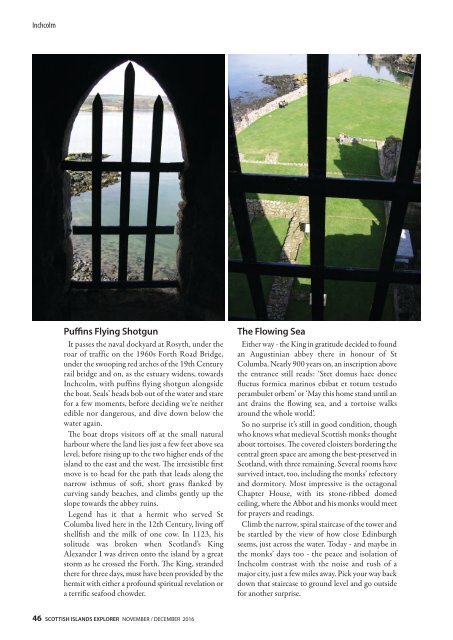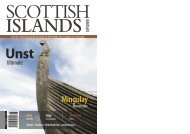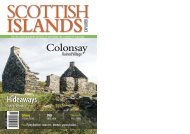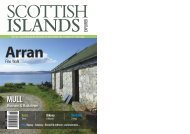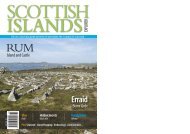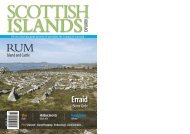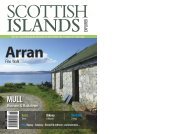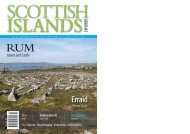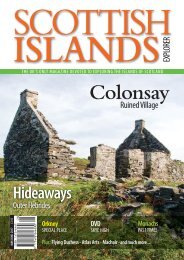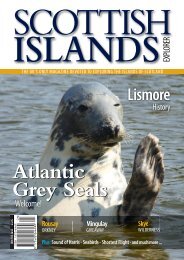Create successful ePaper yourself
Turn your PDF publications into a flip-book with our unique Google optimized e-Paper software.
Inchcolm<br />
Puffins Flying Shotgun<br />
It passes the naval dockyard at Rosyth, under the<br />
roar of traffic on the 1960s Forth Road Bridge,<br />
under the swooping red arches of the 19th Century<br />
rail bridge and on, as the estuary widens, towards<br />
Inchcolm, with puffins flying shotgun alongside<br />
the boat. Seals’ heads bob out of the water and stare<br />
for a few moments, before deciding we’re neither<br />
edible nor dangerous, and dive down below the<br />
water again.<br />
e boat drops visitors off at the small natural<br />
harbour where the land lies just a few feet above sea<br />
level, before rising up to the two higher ends of the<br />
island to the east and the west. e irresistible first<br />
move is to head for the path that leads along the<br />
narrow isthmus of so, short grass flanked by<br />
curving sandy beaches, and climbs gently up the<br />
slope towards the abbey ruins.<br />
Legend has it that a hermit who served St<br />
Columba lived here in the 12th Century, living off<br />
shellfish and the milk of one cow. In 1123, his<br />
solitude was broken when Scotland’s King<br />
Alexander I was driven onto the island by a great<br />
storm as he crossed the Forth. e King, stranded<br />
there for three days, must have been provided by the<br />
hermit with either a profound spiritual revelation or<br />
a terrific seafood chowder.<br />
The Flowing Sea<br />
Either way - the King in gratitude decided to found<br />
an Augustinian abbey there in honour of St<br />
Columba. Nearly 900 years on, an inscription above<br />
the entrance still reads: ‘Stet domus haec donec<br />
fluctus formica marinos ebibat et totum testudo<br />
perambulet orbem’ or ‘May this home stand until an<br />
ant drains the flowing sea, and a tortoise walks<br />
around the whole world’.<br />
So no surprise it’s still in good condition, though<br />
who knows what medieval <strong>Scottish</strong> monks thought<br />
about tortoises. e covered cloisters bordering the<br />
central green space are among the best-preserved in<br />
Scotland, with three remaining. Several rooms have<br />
survived intact, too, including the monks’ refectory<br />
and dormitory. Most impressive is the octagonal<br />
Chapter House, with its stone-ribbed domed<br />
ceiling, where the Abbot and his monks would meet<br />
for prayers and readings.<br />
Climb the narrow, spiral staircase of the tower and<br />
be startled by the view of how close Edinburgh<br />
seems, just across the water. Today - and maybe in<br />
the monks’ days too - the peace and isolation of<br />
Inchcolm contrast with the noise and rush of a<br />
major city, just a few miles away. Pick your way back<br />
down that staircase to ground level and go outside<br />
for another surprise.<br />
46 SCOTTISH ISLANDS EXPLORER NOVEMBER / DECEMBER <strong>2016</strong>


